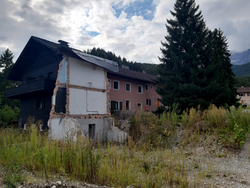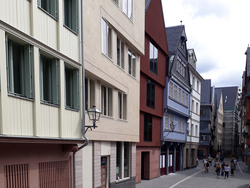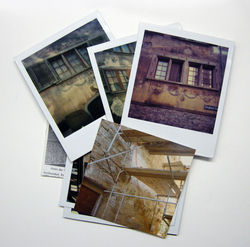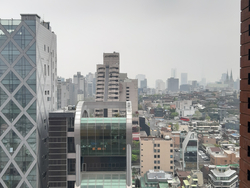Forschung | Arbeitsschwerpunkte
Theorien und Praktiken des »Weiterbauens«
Architektur und Wertewandel
Metropolenvergleich Berlin-Seoul
Begriff, Methoden, Felder der »Architekturwissenschaft«
Sammeln als »Werkzeug des Entwerfens«
Begriff und Methoden »Reflexiver Entwurfsforschung«
(Historische) Medien der Architektur und Kunst, Kritik und Vermittlung
Geschichte des Wohnens
Kulturtechnik des Reisens als Inspirationsquelle in der Architektur
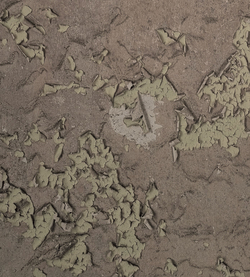
Projekte | Projektbeteiligungen [Auswahl]
2024/25 | Beitrag zum Forschungsprojekt des Lehrstuhl Städtebau, jessenvollenweider, der TU Dortmund
Vertiefungsprojekt zur Frage des Nachkriegswohnbaus in Berlin West und Ost unter dem Titel „Gebauter Ideologiestreit oder Kontinuität des Tradierten?“, zur Veröffentlichung geplant in: „Berliner Stadtmodelle | Berliner Typologies,
von der Reform der Mietskaserne bis zur IBA '87“.
2024 | Objektbetrachtung im Kontext des Theaterbauwissens
Auf Einladung des DFG-geförderten Forschungsprojekts „Theaterbauwissen“, das sich aus kunst-, technik- und theaterwissenschaftlicher Perspektive der wissens- und sammlungsgeschichtlichen Erforschung der Theaterbausammlung des Architekturmuseums der TU Berlin widmet, ist eine sogenannte Objektbetrachtung entstanden. Wird erscheinen in der Publikation, angekündigt im Berliner Jovis Verlag.
2017 – 2023 | Kulturelle und Technische Werte historischer Bauten
Mit-Antragstellerin im DFG-Graduiertenkolleg 1913 der Brandenburgischen Technischen Universität Cottbus
2022 – | Bildgebrauch im Architekturentwerfen
Ausgangspunkt der Untersuchung ist die Frage, wie sich die ‚Entwurfsfähigkeit‘ von Bildern, die als gesammelte, vorbildliche Referenzen in den Designprozeduren der Architektur häufig zur Anwendung kommen, feststellen, untersuchen und systematisieren lässt. Untersuchungsgegenstände sind historische wie gegenwärtige Fallbeispiele und dabei deren Bildgebrauch, die Anlage, die Strukturierung und die Nutzung von Bildersammlungen beim Entwerfen.
2019 – 2021 | Seoul – Berlin City Dialogues (DAAD)
Comparative Evaluation of Architectural and Urban Performance in the Contemporary Urban Strategies of Berlin and Seoul [together with J. Miller Stevens und G. Weckherlin, BTU Cottbus-Senftenberg] – Partner Seoul National University (SNU)
The cities of Berlin and Seoul, though hardly comparable in size, share a common history as cities of tremendous postwar reconstruction, capitals of divided nations and as cities of rapid growth and global rise. Architectural culture in cities plays a key role in implementing contemporary urban strategies. Now the interrelationship between urban strategy and architectural culture needs to be understood more clearly and fully. Thus, this study focuses on the Berlin Strategy and the Seoul Plan as the current city strategies (or urban basic plans) in Germany and Korea, with 2030 being the common target year. The aim of this study is to identify the spatial characteristics of urban strategies, to monitor and evaluate the contents of architectural plans, and possibly to suggest alternatives.
